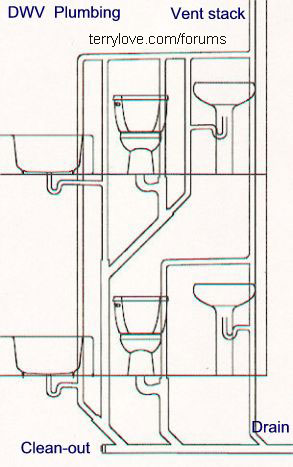nola000
Member
You mention same plane. The lav. trap is going behind a pedestal sink and will be about 16" off the finished floor. The tub trap is going under the tub, its a raised house. So they wont be on the same plane. Is that what you mean?
Im going to resize the picture so people can see it better.
When you say the tub will be vented by the lav. you mean if I put the AAV above the lav. not in the wet line? Right?
Im going to resize the picture so people can see it better.
When you say the tub will be vented by the lav. you mean if I put the AAV above the lav. not in the wet line? Right?
Last edited:

